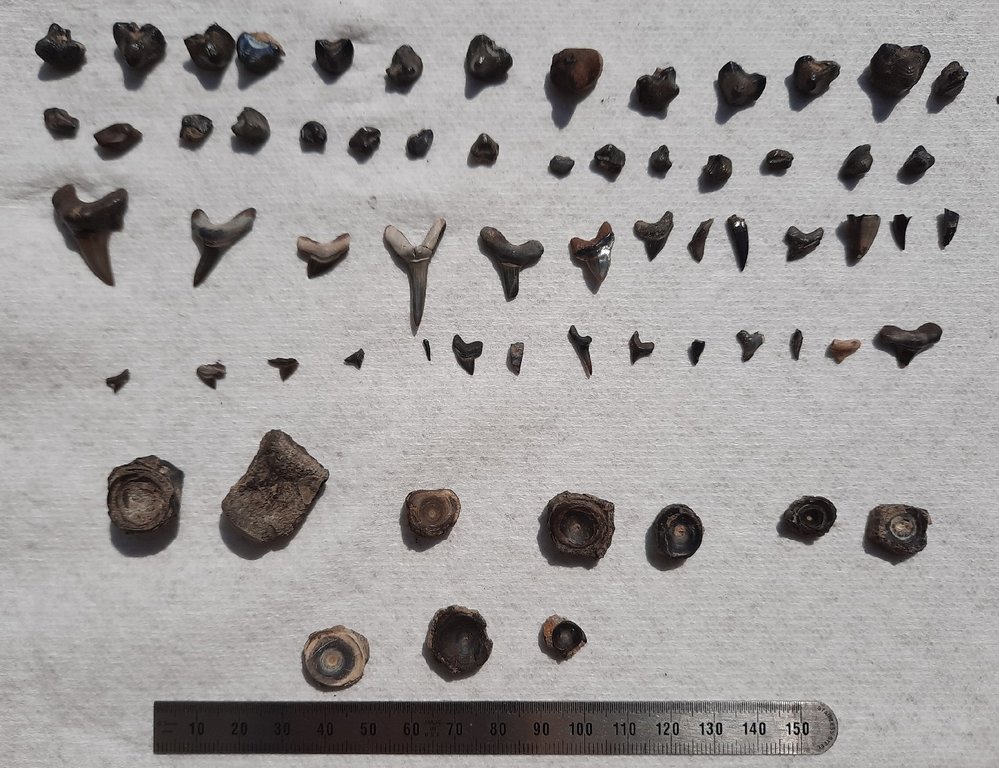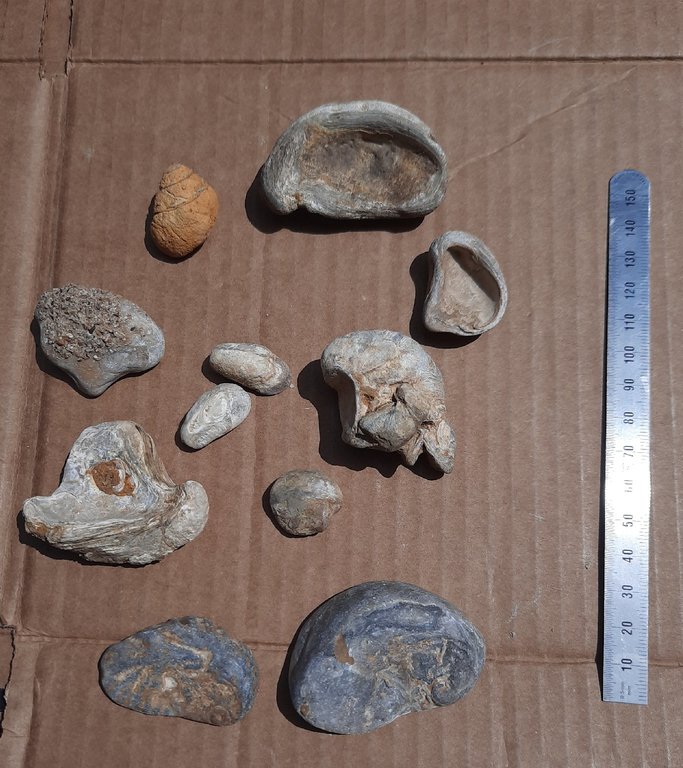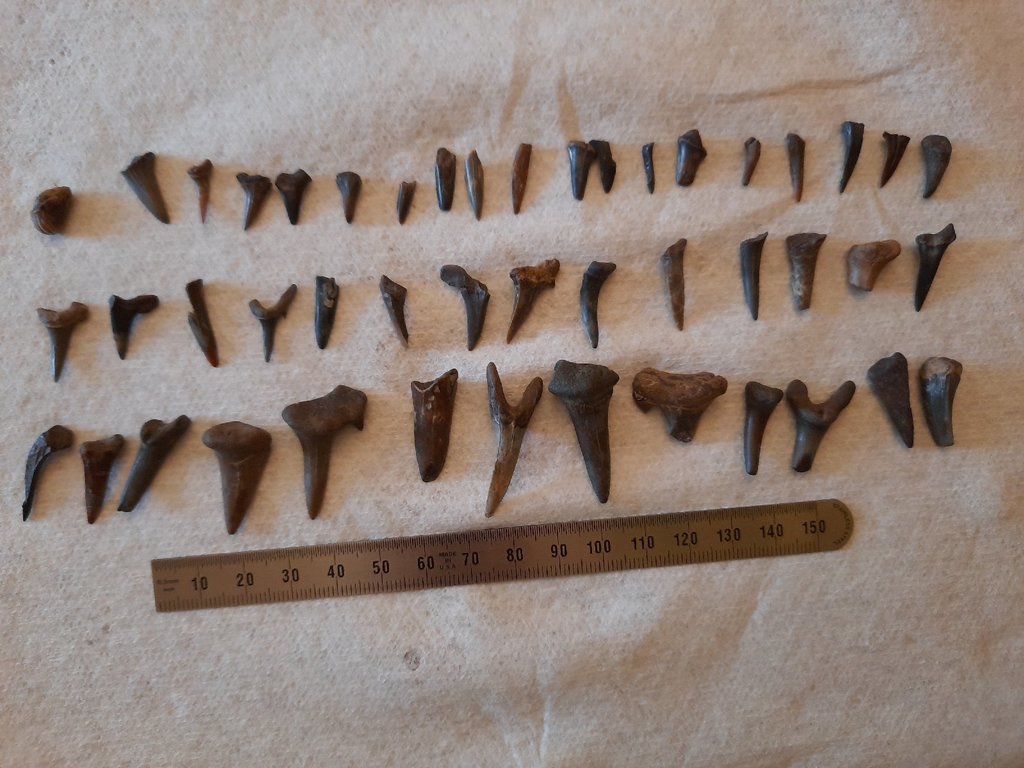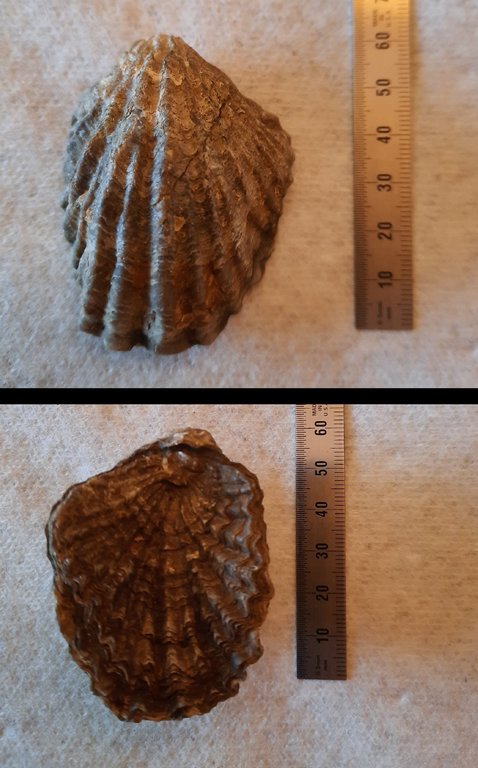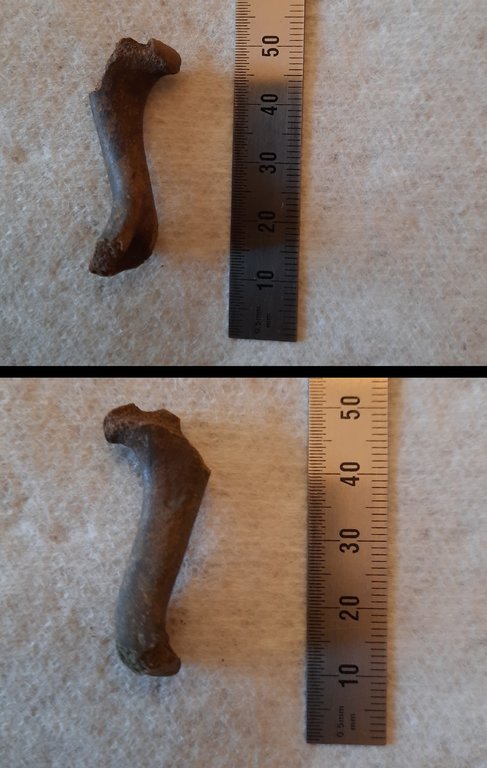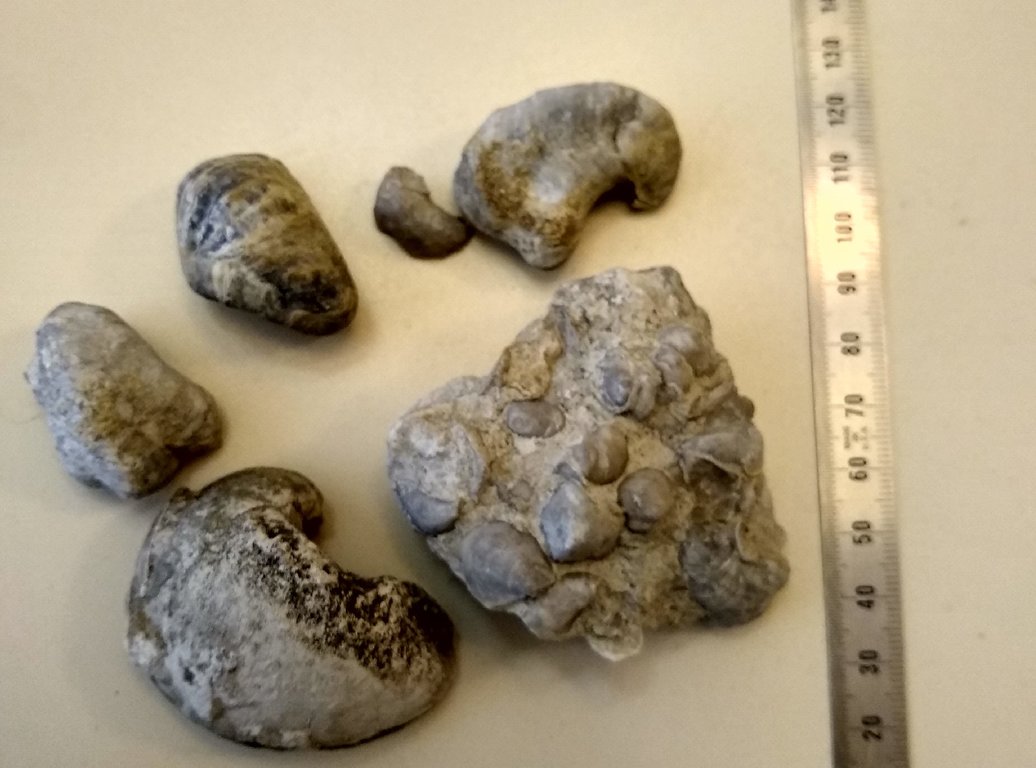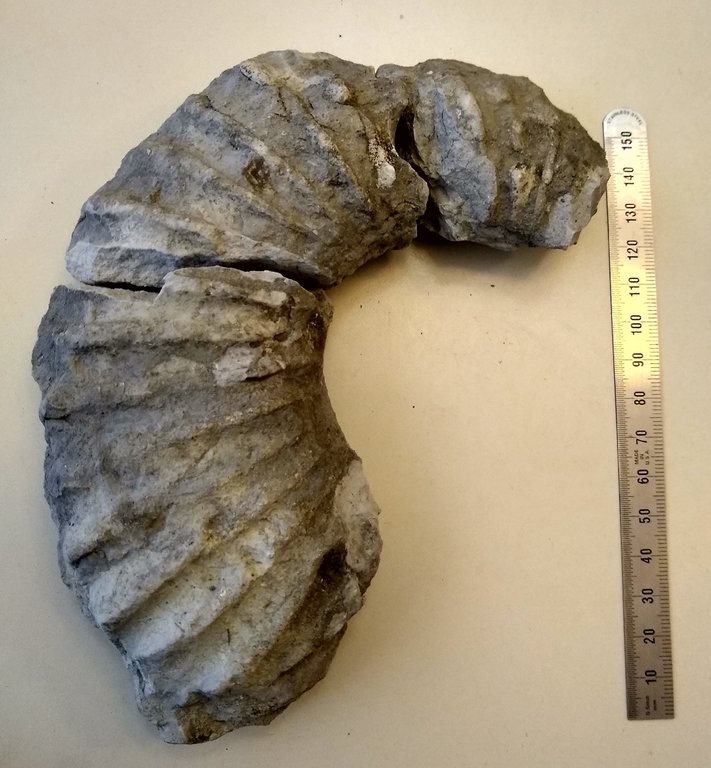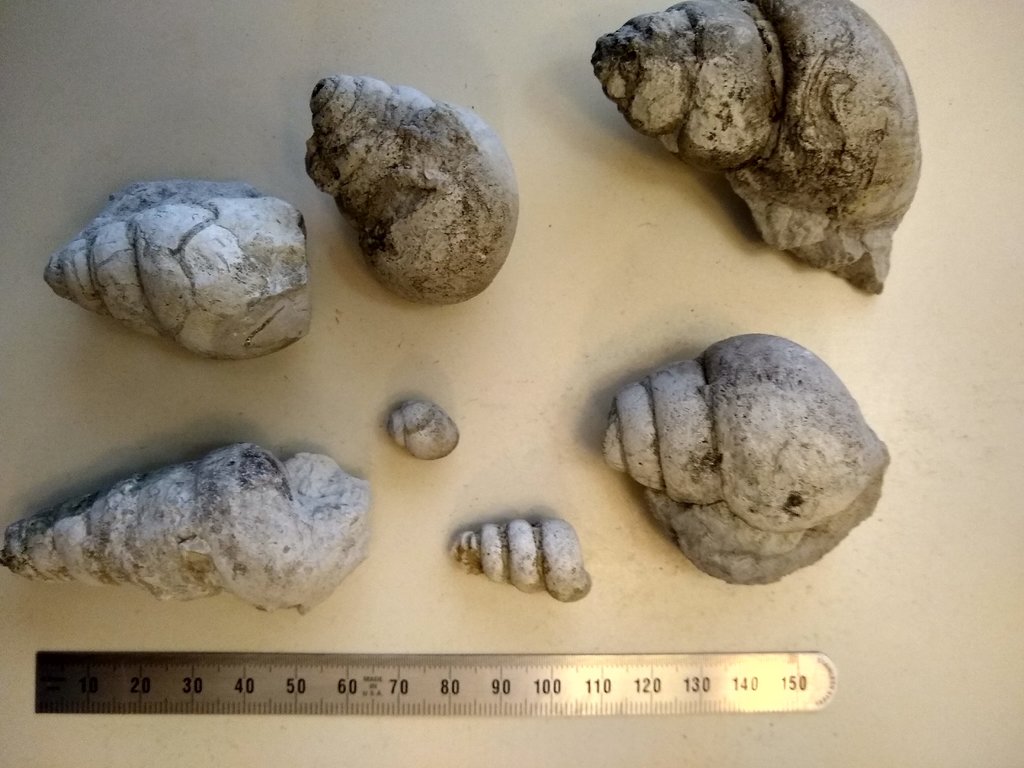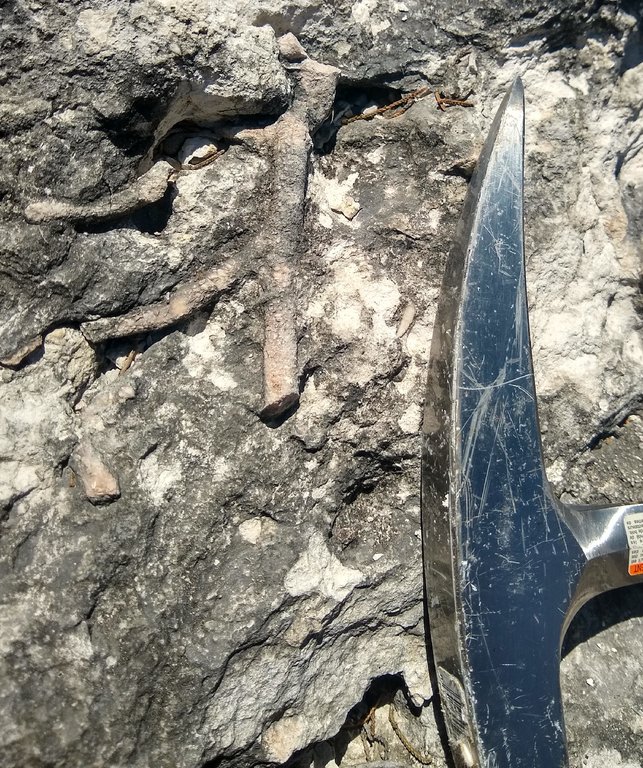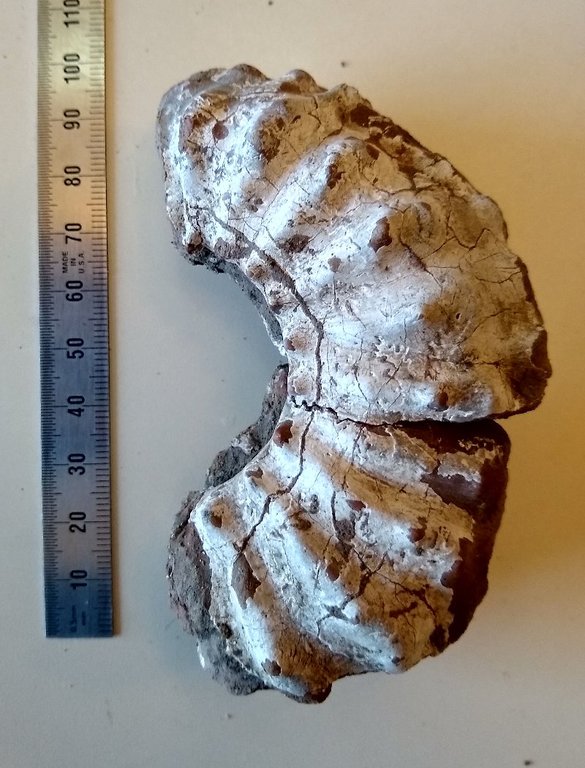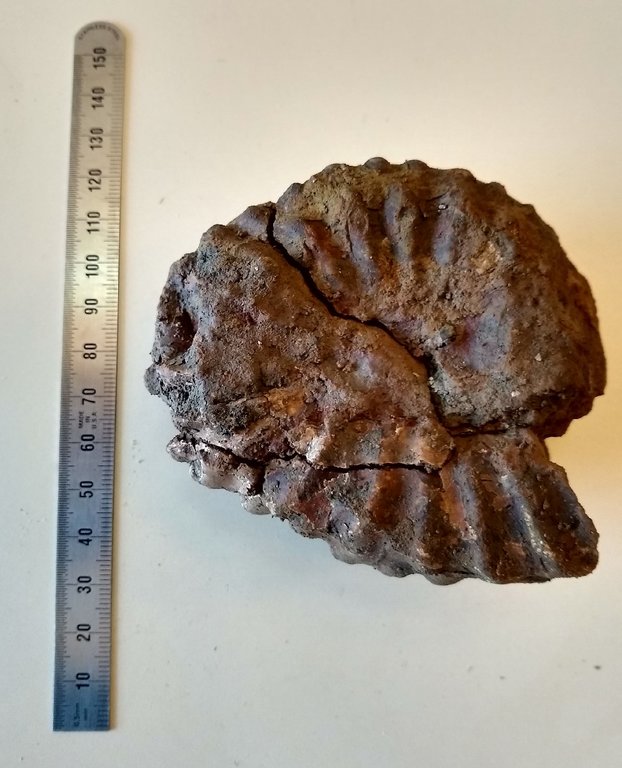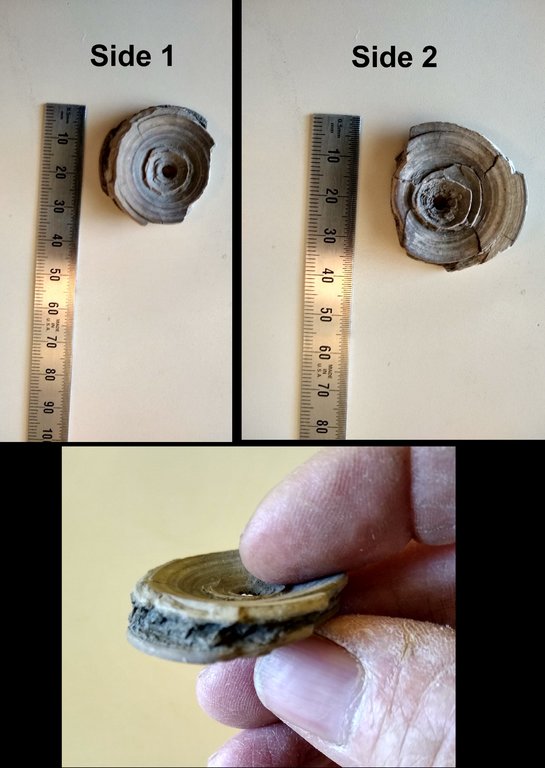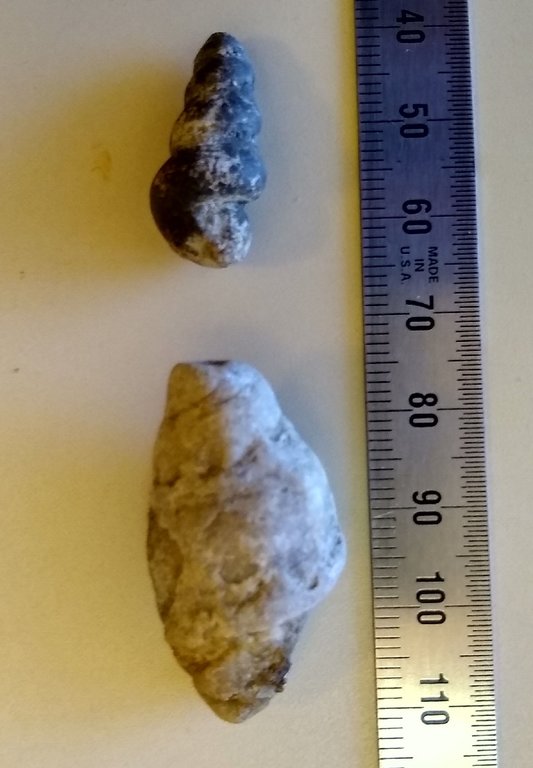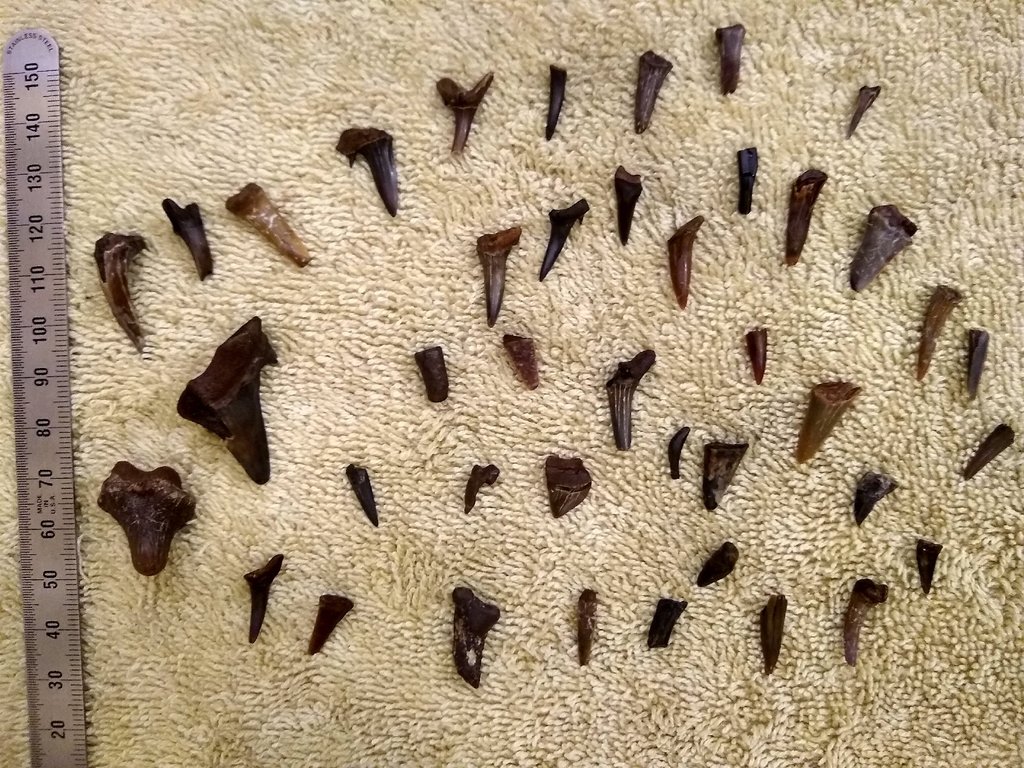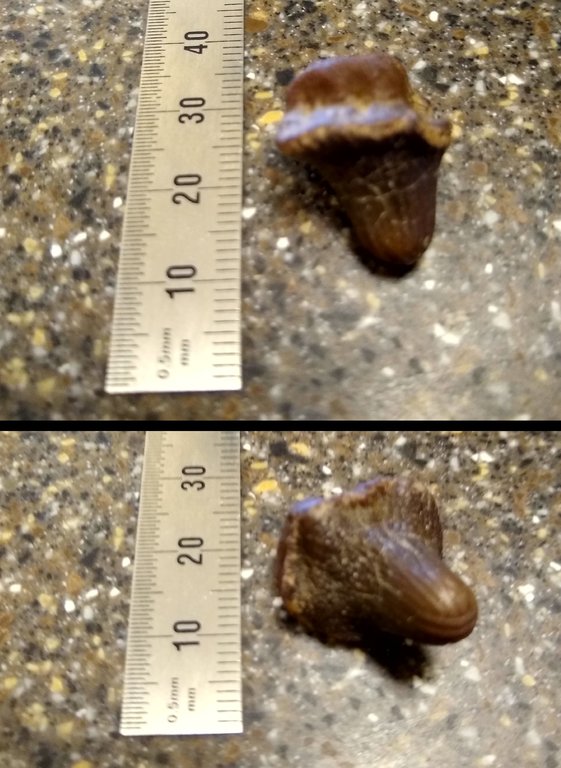It was finding an ammonite segment on a fishing trip back in 2013 that reminded me how fascinating I find fossils. So, when I started researching where to go fossil hunting back in April, the Lake Texoma area quickly became high on my list, because it has large ammonites, both on the lower lake, and on the Red River above the lake. But the water level remained too high all spring and early summer. Even now, it is likely too high to find much on the lower lake. But the river flow and level has finally decreased enough that I decided to make a trip to it yesterday, to hunt a Duck Creek outcropping on a bluff. This was one of those trips that turned into more of an adventure than I bargained for. The hike from where I had to park was a lot longer and more arduous than I anticipated (it always looks easy on a satellite image, doesn’t it?), and it ended up being one of those situations where I just couldn’t come back the way I went in. So, I ended up getting lost, and hiking a much further distance on the return, with a heavy backpack.
I should have taken a moment to mark on gps where I parked the van, and didn’t do it. I won’t make that mistake again. Even when you don’t have wifi or cell coverage (and I didn’t), gps works, and I’ll use it better from now on. I wouldn’t have been able to make anything close to a straight line hike back to the van, but would have done a lot better than I did. When you end up making an unexpectedly long hike with a heavy backpack on a humid ninety something degree day in July in Oklahoma, you run out of water. That iced tea in my lunch ice chest in the van was very welcome when I finally got back to it. This is a great fossil hunting spot, but I think I’m putting it on my list of spots for milder weather times of the year.
Once I reached the bluff, I couldn’t believe how many large ammonite fragments there were. Every five steps I took, I saw another, and took over thirty photos in short order. Here are a few representative photos. Keep in mind that chisel is 12 inches (30 cm) long. Click the photos to be able to zoom in and get a closer look.
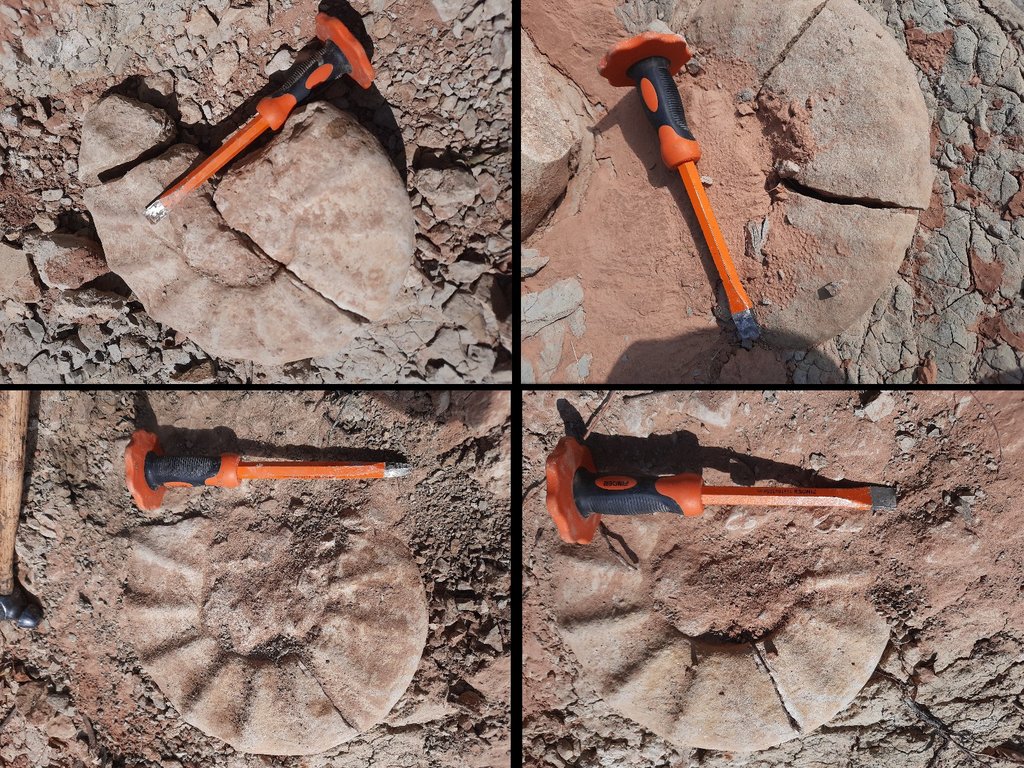

I excavated a few of the half embedded large ammonites. I was thinking that if I found a very large complete ammonite, that would be the one thing that would go into my backpack for the return hike. Even one of these would make for quite a challenge to get back with. I kept thinking I would find a complete one, but I didn’t. This is as close as I got. I already have so many ammonite fragments at home, I just didn’t want to carry heavy ones that weren’t part of a complete ammonite.

I did manage to find a couple of smaller ammonites that, embedded in lots of matrix, look like they might be complete. I decided these were the two I would take home. I recently purchased an air scribe, so I’ll see how I do at removing the matrix. I have some gastropods I’m going to practice on first. These two ammonites still need some chisel work first, and I thought about chiseling more on them on site to get them lighter to carry, but I decided I’d rather do it at home, where I can take my time, and am better armed with glue if needed. Once I got them home and cleaned better, I can see that it’s just marl covering the larger one. That shouldn’t be too tough to remove. But it’s lots of solid limestone on the smaller one. That’s going to be a chore.


These are the only smaller things I kept. I seem to have a tougher time than most finding any echinoids, so I was tickled to find these two. The top of that echinoid on the right was completely covered with limestone to the point where I almost didn’t recognize it as an echinoid. But I did recognize it; my eyes must be getting better. A vinegar soak and scrub brush work confirmed what it is.
The fossil on the lower left appears to be part of a coral. I don’t know what the lower right one is. It’s shaped like a broken tooth, but the wrong color for a tooth. I was tempted to dismiss it as a burrow fragment (there were lots of those around), but it just looks so much like a tooth. There were plenty of Gryphaea and small bivalves, but I didn’t gather any of those.
With so many large ammonites everywhere, I reallly had trouble training my eyes to look for small stuff. I love ammonites, and the kid-in-the-candy-store syndrome was hard to overcome to make myself look for the other fossils I knew were there. Perhaps I’ll get better with experience. And I limited my time at the bluff, knowing the hike back was going to be tough, and might take a long time. If I come back when it’s cooler outside, I can stay longer and spend more time looking for the small treasures.
I had done 40 mile bike rides each of the two previous afternoons in the heat of the day, and this kind of hike right behind those was definitely overdoing things for this old fart. Duly noted.
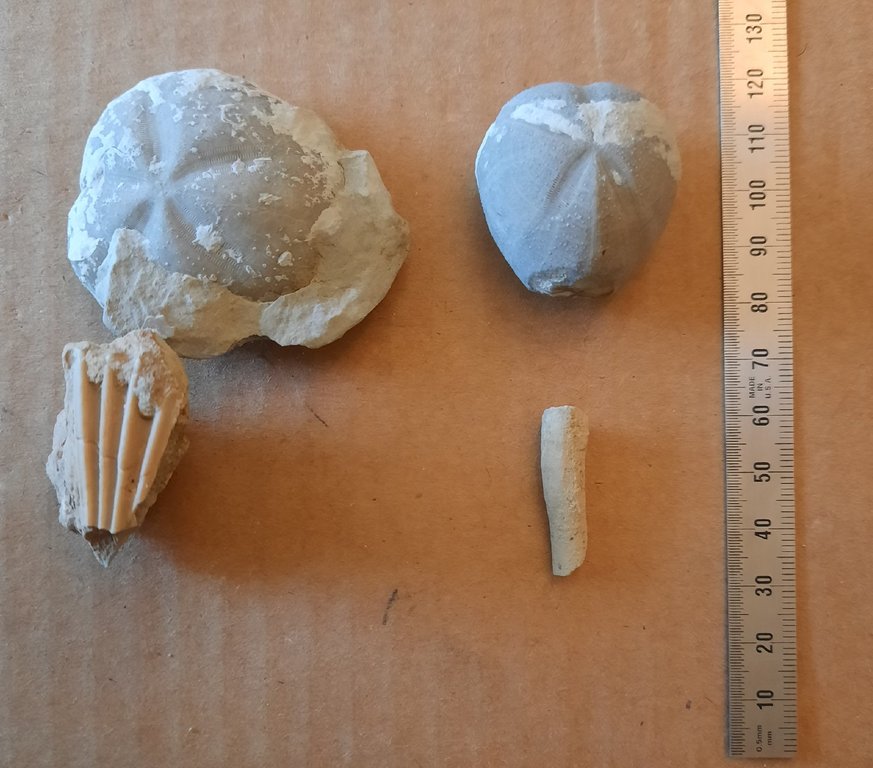
My lesson about marking my vehicle location on GPS wasn’t my last lesson from this trip. The next one came from the Dallas Paleontological Society. I had joined DPS in April, when I first started researching fossil hunting in this area. Their meetings are too far away for me to attend, and all their fossil hunting trips are on Saturdays, which doesn’t work for me, but even considering those two things, it still seemed worthwhile to join. I would be supporting the nearest thing to a local club, there were lots of experts there I might be able to confer with if needed, and they did have a wealth of online resources on their web site I could use when I research.
But shortly after this Texoma trip, I got a nasty email from them. They told me that not only was this one of their secret fossil hunting spots which I couldn’t have gotten to without trespassing (an ouright lie), but they also had a trip coming up to this spot in a couple of weeks, and they didn’t allow members to go hunting their spots just before a club trip. They asked me to change my post in The Fossil Forum to make the location of my hunt less easy to figure out, and gave me a stern warning about hunting before a club trip, telling me I would be tossed out of the club if I did it again. Believe it or not, after waiting for months for the water level to recede enough to hunt this spot, I now had a club telling me where and when I could and couldn’t fossil hunt.
I complied with the request to change my post in The Fossil Forum by contacting a moderator and getting him to change the post. Then, I promptly resigned my DPS membership. I’ll no doubt miss their online resources at times when I’m researching, but I’ll live with that. Having a club telling me when and where I can hunt will always be completely unacceptable to me. Good riddance, DPS.

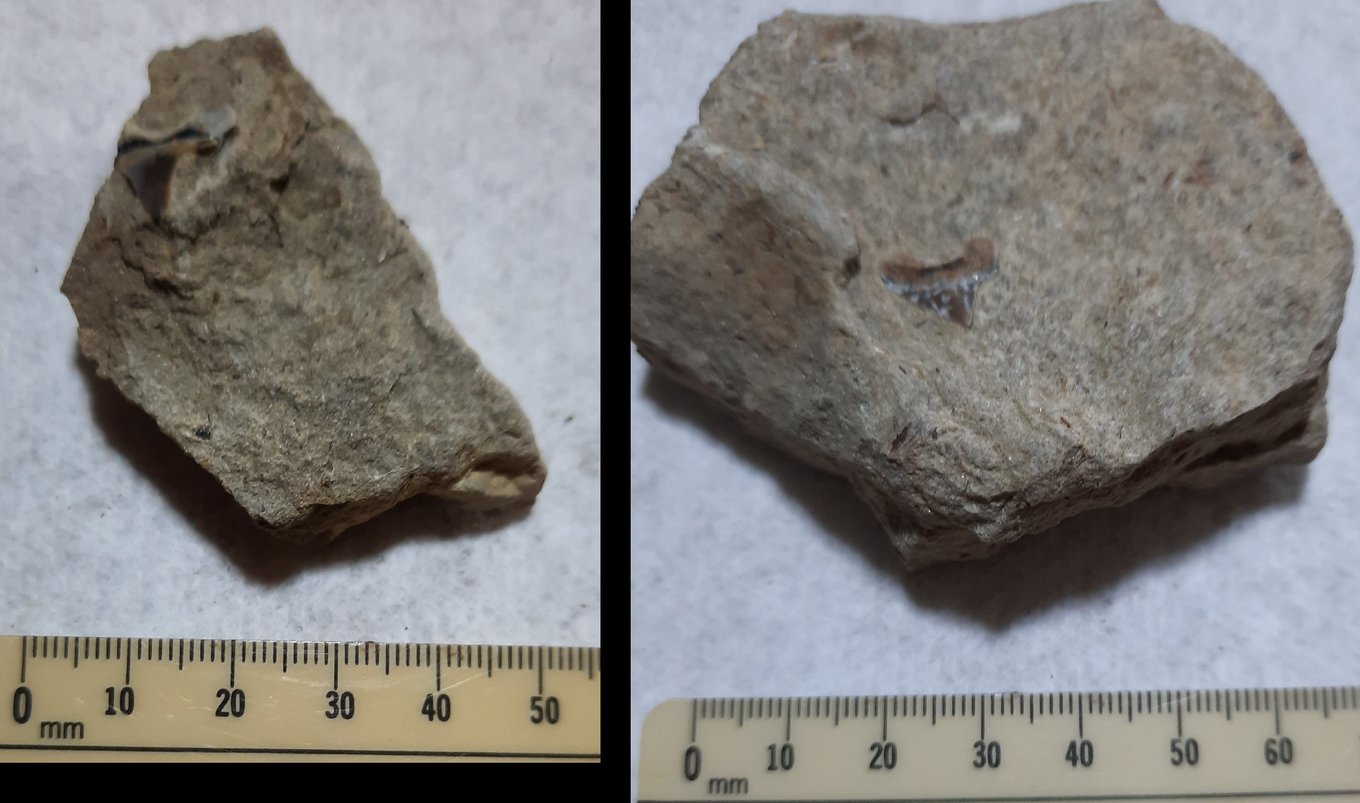












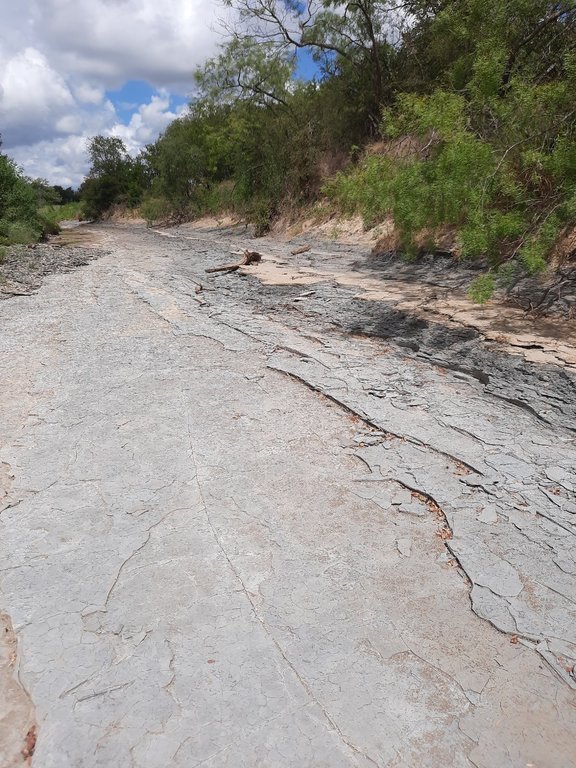


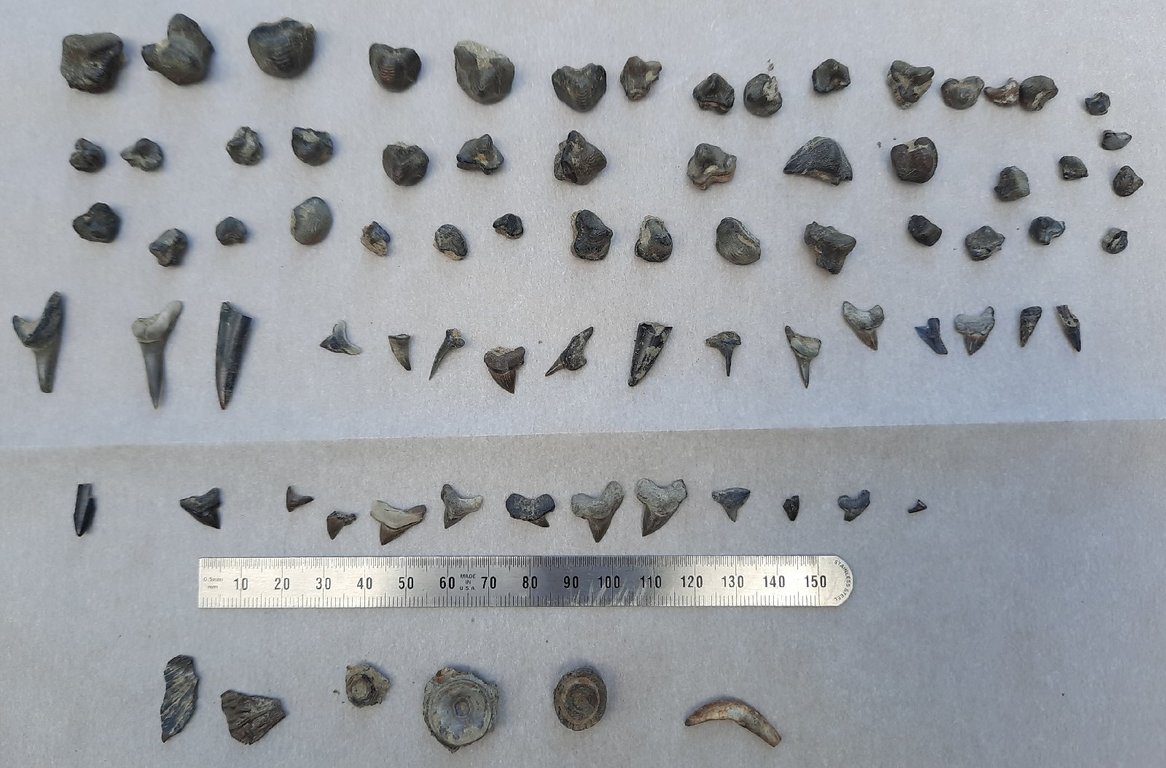

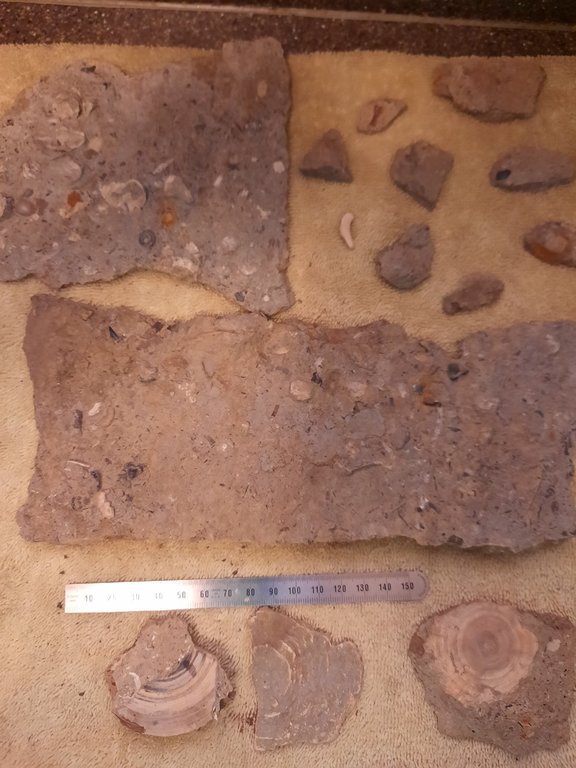 >
>
